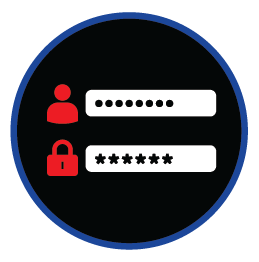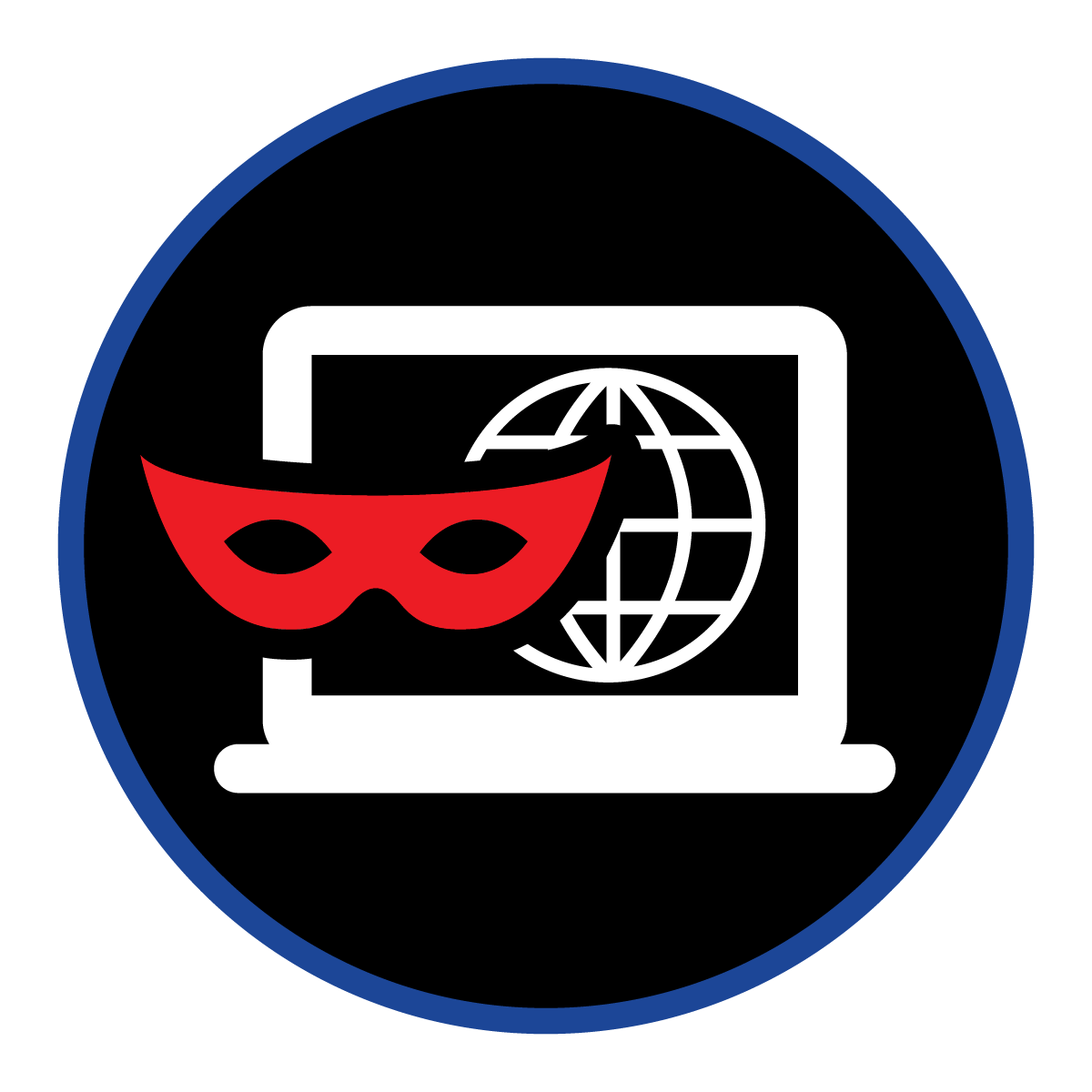
Dark Web Presence
Unmasking the Shadows: ThreatNG Dark Web Investigation Module
The ThreatNG Dark Web Presence Investigation Module delves into the hidden corners of the internet, uncovering an organization's presence on the dark web and identifying potential associated digital risks. This module caters to the needs of external attack surface management (EASM), digital risk protection (DRP), and security ratings providing valuable insights for proactive security measures.

Prioritize Security Resources: Leverage Dark Web Insights for Proactive Risk Management
Enhanced Threat Detection
The module monitors the dark web for mentions of the organization and helps identify potential threats such as data breaches, ransomware attacks, and credential leaks.
Improved Incident Response
Early detection of dark web activity allows for a faster and more effective response to security incidents, minimizing potential damage.
Proactive Risk Mitigation
Security teams can prioritize mitigation strategies and allocate resources efficiently by understanding how the organization is perceived on the dark web.
The ThreatNG Dark Web Investigation Module is crucial in External Attack Surface Management (EASM) and Digital Risk Protection (DRP) strategies. By providing a window into the dark web, this module empowers organizations to stay ahead of potential threats and proactively protect their digital assets and reputation.

Identification of Exposed Information: The module scans the dark web for mentions of the organization's data, such as employee credentials, customer information, or intellectual property. It helps identify potential attack vectors and allows immediate action to secure exposed data.
Ransomware Threat Assessment: The module helps assess the potential risk of a ransomware attack by detecting mentions of the organization in association with ransomware events. This information allows for proactive defense measures and incident response planning.
Compromised Infrastructure Detection: The module can identify compromised infrastructure related to the organization, such as compromised servers or hijacked domains. It helps eliminate potential attack vectors and regain control of compromised assets.
Brand Reputation Monitoring: The module helps monitor the dark web for negative mentions of the organization or its brand. It allows for early detection of potential reputational damage and enables proactive measures to address negative sentiment.
Fraudulent Activity Detection: The module helps detect potential fraudulent activity and prevent further damage by identifying the presence of stolen credentials or leaked customer data associated with the organization.
Third-Party Vendor Risk Assessment: The module can assess third-party vendors' dark web presence, providing insights into their security posture and potential risks to the organization.

Ransomware Events
Discover, Assess, Report, and Monitor Organizations Associated with Ransomware Events
Managing an organization's external attack surface, digital risk, and security ratings must consider whether it has been the target of a ransomware attack. This knowledge is valuable in comprehending the attack's nature, evaluating its consequences, controlling third-party risk, and raising security ratings. This information also offers useful insights into the flaws and vulnerabilities that attackers exploit, the potential effects of upcoming assaults, the risk associated with third-party vendors, and how to improve your reputation as a reliable business partner. Organizations may lessen the risk of ransomware attacks and reduce the possible effects of any attacks that do take place by adopting a proactive security strategy.
Compromised Credentials
Discover, Assess, Report, and Monitor for Compromised Credentials
Knowledge of an organization's publicly documented compromised credentials is crucial for managing its external attack surface, digital risk, and security ratings. This knowledge informs more effective protection and reduces the risk of future attacks since compromised credentials can threaten an organization's external attack surface and online presence. These publicly documented compromised credentials can also affect an organization's security rating.

Dark Web Mentions
Discover, Assess, Report, and Monitor for any Mention of People, Places, or Things.
The dark web, accessible through specialized software and not indexed by search engines, must be monitored for organizations to control their external attack surface, digital risk, and security ratings. Dark web presence monitoring can help with risk analysis, identify prospective threats, manage security ratings, and improve incident response. Keeping an eye on the dark web is crucial to maintaining security in the modern digital environment.
FAQs: Unmasking the Shadows with ThreatNG Dark Web Presence
-
Dark web monitoring involves collecting, analyzing, and interpreting information from the hidden parts of the internet, which are not indexed by standard search engines. In cybersecurity, its primary purpose is to gain crucial insights into potential threats, vulnerabilities, and risks that could impact an organization. It's a foundational element for enhancing threat detection, improving incident response, and enabling proactive risk mitigation strategies.
-
Many dark web monitoring solutions focus on providing a sheer volume of raw data, which often leads to alert fatigue and misallocated resources due to a lack of context. ThreatNG takes a fundamentally different approach: our focus is on actionability, context, and direct relevance to your observable external attack surface and digital risk posture. We go beyond simply collecting mentions to ensure that the intelligence you receive directly impacts your security decisions.
-
ThreatNG transforms raw dark web data into precise, prioritized insights through deep integration and correlation:
Contextual Correlation: We directly correlate dark web findings with your external digital footprint (exposed assets, domains, cloud services). Knowing what is mentioned is important, but understanding how it relates to your exposed assets is what drives action.
DarCache Rupture (Compromised Credentials): We identify and alert on compromised credentials that are relevant to your organization (e.g., matching your domain's email format or tied to services you use). These insights directly influence your BEC & Phishing Susceptibility and Cyber Risk Exposure scores, providing a clear path to mitigation.
DarCache Ransomware: Our intelligence tracks specific ransomware gang activities and mentions. If a group is discussing tactics relevant to your industry or actively exploiting a vulnerability we've found in your external perimeter, this becomes a high-priority warning.
Vulnerability Context: Dark web chatter about specific exploits is tied directly to our DarCache Vulnerability intelligence (NVD, EPSS, KEV, PoC Exploits) . This shows you the real-world exploitability of threats discussed, enabling smarter prioritization.
Prioritization: All dark web findings are integrated into your overall Security Ratings, ensuring that insights are prioritized based on actual risk impact, not just data volume.
-
ThreatNG's Dark Web Presence Investigation Module is crucial for enhancing External Attack Surface Management (EASM), Digital Risk Protection (DRP), and Security Ratings, supporting various critical use cases:
Enhanced Threat Detection & Proactive Risk Mitigation: Identify potential threats like data breaches, ransomware attacks, and credential leaks before they escalate.
Improved Incident Response: Early detection of dark web activity allows for a faster and more effective response to security incidents, minimizing potential damage.
Identification of Exposed Information: Scan the dark web for mentions of your organization's sensitive data, including employee credentials, customer information, or intellectual property.
Ransomware Threat Assessment: Assess the potential risk of a ransomware attack by detecting mentions of your organization in association with ransomware events.
Compromised Infrastructure Detection: Identify compromised infrastructure related to your organization, such as compromised servers or hijacked domains.
Brand Reputation Monitoring: Monitor for negative mentions of your organization or brand on the dark web, enabling proactive measures to address negative sentiment and potential brand damage.
Fraudulent Activity Detection: Identify the presence of stolen credentials or leaked customer data, helping to prevent further fraudulent activity.
Third-Party Vendor Risk Assessment: Objectively assess the dark web presence of your third-party vendors, providing insights into their security posture and potential risks they introduce.
-
ThreatNG's contextual and actionable dark web intelligence provides significant value to a range of stakeholders:
Security Operations Centers (SOCs) & Incident Response (IR) Teams: For automated alert enrichment, faster triage, and improved incident context.
CISOs & Risk Managers: To make strategic, data-driven decisions, optimize resource allocation, and understand the true external risk landscape.
Vulnerability Management Teams: To prioritize external vulnerabilities based on confirmed active exploitation or discussions on underground forums.
Brand Protection Teams: For early detection of reputation threats, brand impersonation, or misinformation originating from the dark web.
Third-Party Risk Management (TPRM) Teams: To gain objective insights into vendor security posture beyond questionnaires.
Organizations across all sectors, particularly those handling sensitive data, with a high public profile, or operating in highly regulated industries.

















